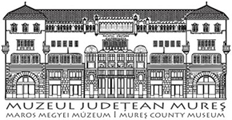Marisia - Maros Megyei Múzeum Évkönyve 32/2. (2012)
Articles
166 Zs. Nyárádi Trench 8 We opened trench 8 along the southern axis of trench 3, 5.5 m away from it, with an east-west orientation and a 1 x 5 m size. We detected the medieval culture layer in the eastern part of the trench. We found feature 10 in the cross section of the trench’s northern corner. Its surface could not be observed as it did not go deep into the clayey subsoil. Its filling did not contain any artefacts. In terms of the materials yielded this was the second poorest trench after trench number 7. The scattered and withered materials were made up of many 14th— 15th century and late Migration Period items (PI. 10/14), while the rest of them dated back to other periods in mostly similar proportions. Trench 9 The trench was opened 5.5 m away from trench 4, with an east-west facing and a 1 x 5 m size. The oval trace of feature 20 was found in the south-western part of the trench. The filling of the rather large pit contained considerable amounts of wattle-and-daub chunks and coal patches. Its diameter was 120 cm, its depth 60 cm, and it was gradually narrowing towards the bottom. Its filling yielded few late Árpád dynasty period pottery fragments, made on slow potter’s wheels (PI. 13/10). The pit was only partially excavated as its southern half was lying outside the trench. Numerically, the scattered materials were dominated by 14th—15th century pottery, which could be explained by the presence of nearby features which we managed to uncover during the excavations. The materials from other periods appeared in mostly similar proportions. Trench 10 We opened trench 10 at a distance of 0.5 m south of trench 4, with a size of 3 x 5 m. We found the brownish grey, dense, slightly mixed culture layer at a 15-20 cm depth. At a 20-40 cm depth we uncovered a surface made of round river stones with a northwest-southeast orientation, which had been placed in a ditch, with larger stones in the middle and smaller ones on the edges (PI. 2/5). Its width was 60-70 cm, the depth of the ditch was 50 cm, and it was rising toward the south where it was only 30 cm deep. The ditch started at the bottom of the medieval culture layer (Pi. 7/2). Its filling was light grey, dense, slightly mixed, toward south it stretched outside the trench and toward west there was no trace of it in trench number 4 (Pi. 7/3). The ditch yielded considerable amounts of pottery from the period of the Árpád dynasty, which had been made on slow potter’s wheels, thinned with granular sand, decorated with lines and waved string. The origin of the stony surface can be placed somewhere in the 14th century as, beside the fragments of a pitcher made with fine sludge on a fast potter’s wheel, and fragments of pots also made on fast potter’s wheels, were uncovered during the excavation of the ditch (Pl. 11/6-11). Regarding its purpose, we have considered it being the foundation of a building but, because there were no ground levels connected to it, we have concluded that if this was indeed a foundation, then the building it was meant for had not been finished. The stony surface extension to the east could not be studied as well because here, the pit of feature 11 was in intersecting it. Trench 11 We opened trench 11 south of trench 10, with an east-west orientation, with a 5 x 4 m size, in order to examine the stony surface. The oval pit of feature 15 was found in the eastern half of the trench. The large pit, dating back to the late Migration Period was presumably part of
